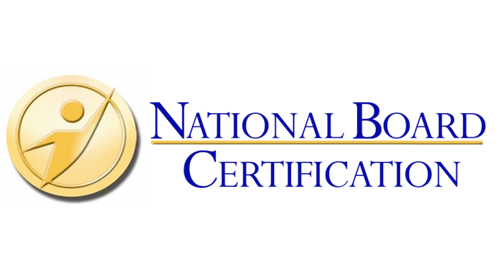
The first step toward obtaining a teaching certificate in Ohio is to pass the required Ohio Assessments for Educators (OAE) tests. There are several options for completing these exams, and there is no single test that can satisfy all of the requirements. To assess teaching abilities, some states have different sets of tests.
Ohio's requirements for teaching certificates
Ohio has specific requirements for teachers who wish to be certified. Candidates must hold a bachelor’s degree in education, or a related field, as well as pass an approved state-approved educator preparation class. Candidates must also have at least 100 hours of field experience including student teaching. The student teaching assignment should last for 12 weeks.
Ohio offers several types of teaching certification. These include Early Childhood (grades 4-9), Middle Childhood (3-9), Adolescence to Young Adult (6-12), Intervention Specialist (grades 6-12), Career Technical, or Multi-age License. Additional licenses are available to teach in particular content areas.

Applicants for licensure in Ohio must also complete a background check. Candidates for licensure in Ohio must also pass the Foundations of Reading test. For licensure in the early childhood field, initial licensure is required. Foundations of Reading Test is required of applicants who want to be intervention specialists. The American Council on the Teaching of Foreign Languages/Language Testing International must administer a language proficiency test to obtain a teaching certificate.
There are other options for Ohio teachers who want to earn a teaching certificate
There are several options available to get a teaching license in Ohio. These programs can help graduates who have a bachelor's degree get their teaching license without going through the formalities of traditional schools. Certain programs require that students have a bachelor’s in education and have completed a teaching preparation course. These programs can be an excellent option for students with busy schedules or who wish to study while also working.
Alternative teacher certification programs can be found online. These may require several years of teaching experience. These programs can cover many topics such as curriculum development, student education, and classroom management. Alternative Resident Educator License of Eligibility is another program that allows students to teach full-time without having to commit time at an accredited college.
How to pass the Ohio Assessments for Educators.
Perhaps you're wondering if the Ohio Assessments for Educators are possible for you. To find out more about the testing process, click here. Visit the Ohio Assessments for Educators website to learn more about the testing process before you sign up. The website has more information regarding the test, including statistics as well as scores. There are also resources available to help you study for the tests.

If you're interested in a license as an early childhood educator, the OAE exam will be required. This exam tests your knowledge of how children learn and the development of children. It also tests your knowledge of factors that impact learning. Learn how to provide student support, create a guidance program, and assess students. Once you pass the exams, you can get a Ohio teaching license.
To prove your proficiency in reading and writing, you can also take Praxis Core exams. These tests can be taken on paper or in computer format. You can also visit the Educational Testing Service website for information on the tests. In some areas, you may be exempted from the Praxis Core requirement if you have high ACT composite or SAT combined scores.
FAQ
Homeschooling is for everyone.
Anyone can homeschool. There are no required qualifications.
It is possible for parents to teach their children after they have finished high school. In fact, many families choose to teach their older children while they attend college.
Parents with less formal education can learn how to teach their children.
After meeting certain requirements parents can become teacher certified. These requirements can vary from one state to the next.
Some states require all homeschooled children to pass a test prior to graduation. Others do not.
Homeschooling parents must register their family with the local school district.
This involves filling in paperwork and submitting it the school board.
After registering, parents may enroll their children into public or private schools.
A few states allow parents to homeschool without registering their children with the government.
If you are a resident of one of these countries, you will have to ensure your children adhere to the state's compulsory attendance requirements.
What is homeschooling exactly?
Homeschooling allows children to be educated at their own home by their parents. It is also known as private education, self-education, or home educating.
Homeschooling is a great option for families who want to teach their kids at home. This allows them to get a quality education in the comfort of their own homes.
The parents educate their children from birth to high school. They decide what subjects and how long they should study. The student learns everything on his/her own time.
The parents decide when to teach their children. Many schools recommend that children enroll in classes between the ages four and twelve. However, some families wait to teach their children until they are old enough to do so.
Parents may use any number of resources to guide them through the curriculum. The lessons can be learned from videos, books and magazines as well as websites.
Many families find that homeschooling is a good fit for their hectic schedules. The parents can spend more time together than traditional public school teachers.
What is the difference in school and college?
Schools are usually divided into classes (or grades), with a teacher who is responsible for teaching a specific class. Colleges are larger organizations that offer more specialized programs and often include university-level courses. The majority of schools focus on core subjects, while colleges offer more specialized programs. Both levels of education are designed to prepare students for higher-level study.
What is an alternative school?
Alternative schools are designed to provide students with learning disabilities with access to education through the support of qualified teachers who can understand their needs.
An alternative school provides children with special educational needs the opportunity to learn in a regular classroom setting.
Additionally, they receive extra support when necessary.
Alternative schools are not only for those who are excluded from mainstream schools.
They are open to children of all abilities and disabilities.
How do you get scholarships?
Scholarships are grants to help with college expenses. There are many types to choose from. These are:
-
Federal Grants
-
State Grants
-
Student Loans
-
Work Study Programs
-
Financial Aid
Federal grants are directly issued by the U.S. government. Most federal grants require applicants fulfill certain requirements. You will need to prove financial need.
State grants are offered by individual states. These grants are not always based on financial need. Some states may offer them for specific reasons.
Banks and other lending institutions can issue student loans. Students often borrow money to pay for tuition and living expenses.
Work-study programs encourage employers to hire qualified student workers. Employers are required to pay employees at least minimum wage.
Financial aid allows low-income families to afford college by paying for all or part of their tuition costs.
What is the difference between public and private schools?
All students can attend the public school for no cost. They provide education from kindergarten through high school. Tuition fees are charged by private schools for each student. They offer education from preschool until college.
Charter schools are public-funded but privately managed. Charter schools don't follow traditional curricula. They allow students more freedom to discover what interests them.
Charter schools are very popular with parents who believe that all children should have equal access to education, regardless of their financial circumstances.
Statistics
- Globally, in 2008, around 89% of children aged six to twelve were enrolled in primary education, and this proportion was rising. (en.wikipedia.org)
- Among STEM majors, that number is 83.5 percent. (bostonreview.net)
- “Children of homeowners are 116% more likely to graduate from college than children of renters of the same age, race, and income. (habitatbroward.org)
- They are more likely to graduate high school (25%) and finish college (116%). (habitatbroward.org)
- In most developed countries, a high proportion of the population (up to 50%) now enters higher education at some time in their lives. (en.wikipedia.org)
External Links
How To
How to get started in homeschooling
Homeschooling means that children are educated at home using a variety methods like reading books, watching videos or doing exercises. Because students can learn at their own pace as well, homeschooling is one of most effective learning methods. It allows them to develop skills such a problem-solving, critical thought, self-discipline. communication, and social skills.
Many parents want to educate their kids at home. In this case, they can opt for homeschooling, which allows them to dedicate their time and energy to their children's education without having to worry about finding someone to take care of their children while they go to work.
There are many benefits associated with homeschooling; some of these include developing the ability to think critically and creatively, increasing their knowledge base, improving their language skills, developing their personal identity, becoming independent learners, and having greater control over their life than if they were attending school.
The main objective of homeschooling is to provide quality education to children so they can become successful adults. Before homeschooling can begin, however, you must meet certain conditions. This includes determining whether your child qualifies to attend private or public schools. Consider what curriculum you will use when you start homeschooling. There are many curricula that you can find online, depending on your budget and expertise. Some of these include classical, Montessori, Waldorf, Reggio Emilia, Charlotte Mason, unschooling, natural learning, and others. Another requirement that you must fulfill before starting homeschooling is to make sure that you have the required resources needed to teach your child. This includes purchasing books, educational materials, computers and electronic devices. These items can be purchased online or in local shops.
Once you've completed the above steps successfully, you can register yourself as a parent who homeschools. Contact your state department for education to get help. They will assist you with filling out forms and provide guidance on how to get started homeschooling.